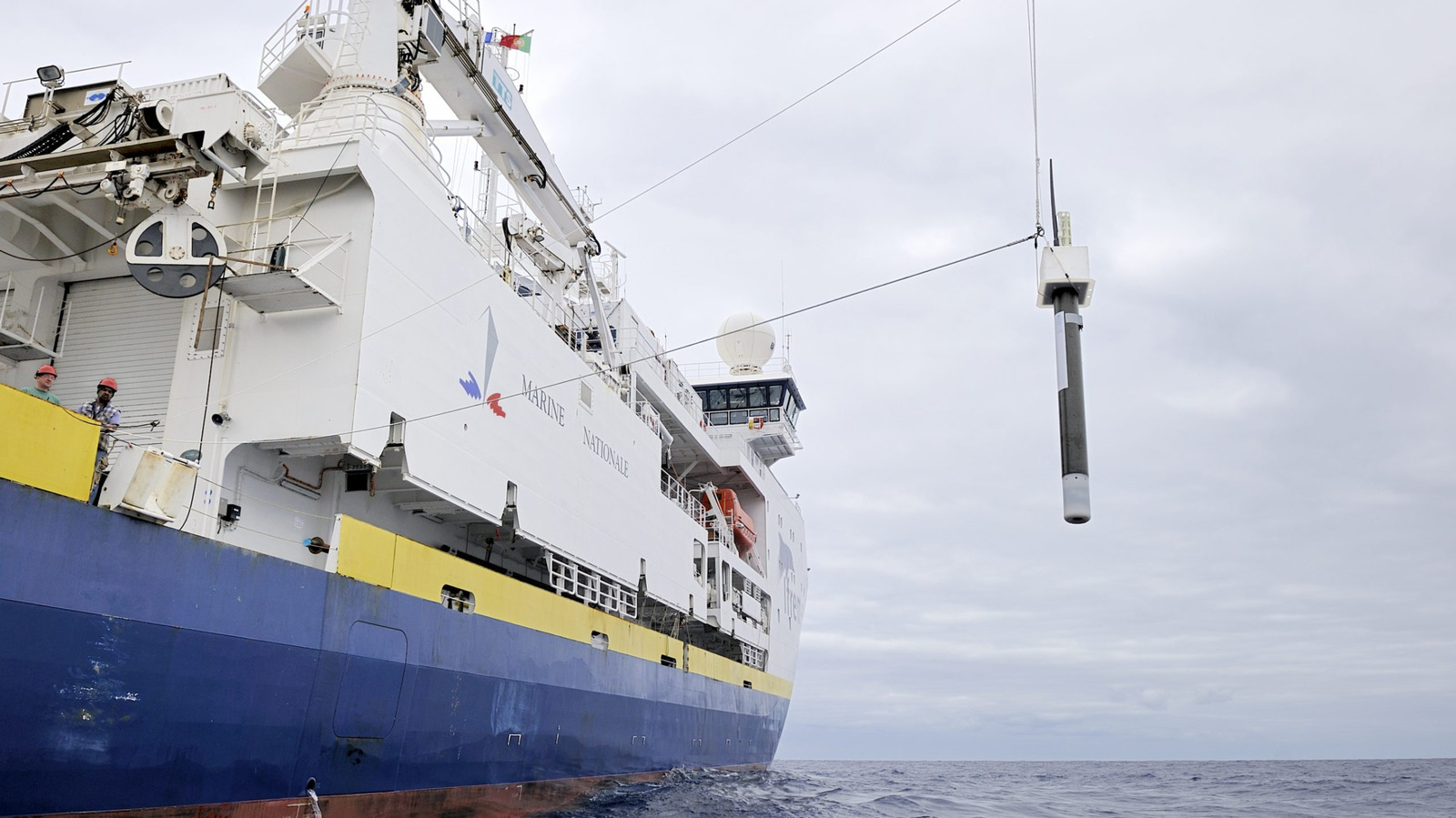Science
Canadian Robots Reveal Massive Phytoplankton Biomass in Ocean

A network of drifting robots in the ocean has led to a significant discovery regarding the biomass of phytoplankton, the tiny yet vital microorganisms that contribute to approximately half of the Earth’s oxygen supply. Researchers estimate that the total mass of phytoplankton floating just beneath the ocean surface is around 314 teragrams (or 346 million tons), equivalent to the weight of 250 million elephants. This revelation highlights not only the abundance of these microscopic organisms but also their crucial role in the planet’s ecosystem.
The breakthrough stems from the efforts of the BioGeoChemical-Argo program, which has deployed hundreds of robotic floats in oceans worldwide over the past decade. These autonomous devices act as a global network of sensors, gathering essential data on various oceanic parameters. They measure oxygen concentration, pH levels, chlorophyll presence, and downwelling irradiance, all of which are vital for understanding the health of marine ecosystems.
Understanding the Importance of Phytoplankton
Phytoplankton are foundational to life in the oceans, serving as the primary producers in the aquatic food chain. They facilitate nearly half of the planet’s photosynthesis, converting sunlight into energy and oxygen. Despite their significance, these microorganisms often go unnoticed compared to larger marine life. Millions can thrive in just a single drop of ocean water, showcasing their remarkable abundance.
The BGC-Argo floats are equipped with sensors that record critical variables influencing phytoplankton life and productivity. For instance, measuring oxygen levels offers insights into how much carbon dioxide is being absorbed by the ocean, while nitrate levels indicate nutrient availability important for phytoplankton growth. Monitoring pH levels helps scientists observe patterns of photosynthesis and respiration, and chlorophyll concentration serves as a direct identifier of phytoplankton activity.
The overarching goal of this research is to track changes in ocean productivity over both short and long terms. By assessing factors such as oxygen production and nutrient cycling, scientists can gain a clearer understanding of how ocean conditions are evolving due to climate change.
Challenges in Monitoring Phytoplankton Populations
Despite their vital role, monitoring phytoplankton populations presents considerable challenges. According to researchers from Dalhousie University, “at least half of that is not observed by space satellites.” This gap in data collection emphasizes the importance of the robotic fleet, which provides a comprehensive view of phytoplankton distribution and biomass.
The significance of monitoring phytoplankton extends beyond ecological observation. Rapid growth events known as phytoplankton blooms can have mixed impacts on marine environments. While these blooms can enhance coastal ecosystems and support fisheries, they can also lead to severe environmental issues. Research published in Nature indicates that harmful algal blooms can produce toxins, adversely affecting marine life and human health. Furthermore, they can create anoxic “dead zones” in water bodies, resulting in the die-off of marine organisms.
The increasing frequency and scale of these blooms, often visible from space due to their distinctive colors, highlight the necessity for tools like the BGC-Argo floats. With ongoing climate change, understanding these trends is critical for assessing the overall health of the planet’s oceans.
In summary, the innovative use of robotic technology in ocean research is paving the way for a deeper understanding of phytoplankton and their essential role in maintaining the Earth’s ecosystems. As the oceans continue to warm, monitoring these microscopic organisms will become increasingly important to grasp the implications for global biodiversity and climate health.
-

 Science2 months ago
Science2 months agoInventor Achieves Breakthrough with 2 Billion FPS Laser Video
-

 Health2 months ago
Health2 months agoCommunity Unites for 7th Annual Into the Light Walk for Mental Health
-

 Top Stories2 months ago
Top Stories2 months agoCharlie Sheen’s New Romance: ‘Glowing’ with Younger Partner
-

 Entertainment2 months ago
Entertainment2 months agoDua Lipa Aces GCSE Spanish, Sparks Super Bowl Buzz with Fans
-

 Health2 months ago
Health2 months agoCurium Group, PeptiDream, and PDRadiopharma Launch Key Cancer Trial
-

 World2 months ago
World2 months agoIsrael Reopens Rafah Crossing After Hostage Remains Returned
-

 Top Stories2 months ago
Top Stories2 months agoFormer Mozilla CMO Launches AI-Driven Cannabis Cocktail Brand Fast
-

 Entertainment2 months ago
Entertainment2 months agoMother Fights to Reunite with Children After Kidnapping in New Drama
-

 World2 months ago
World2 months agoR&B Icon D’Angelo Dies at 51, Leaving Lasting Legacy
-

 Business2 months ago
Business2 months agoTyler Technologies Set to Reveal Q3 Earnings on October 22
-

 Health2 months ago
Health2 months agoYouTube Launches New Mental Health Tools for Teen Users
-

 Health2 months ago
Health2 months agoNorth Carolina’s Biotech Boom: Billions in New Investments








